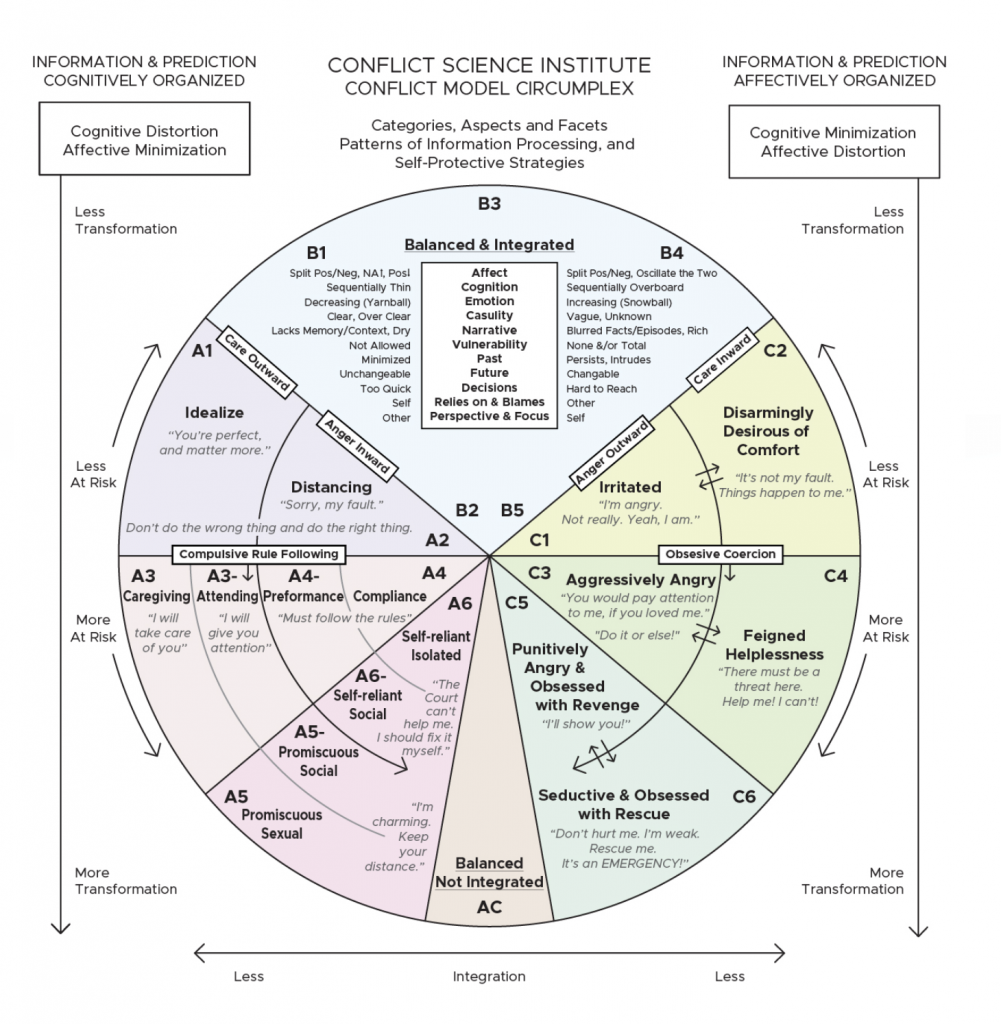A Nuanced Approach to Human Development: Understanding the DMM Circumplex

Human development is an intricate and lifelong process, marked by the continuous evolution of adaptive strategies that respond to our environment. From infancy to old age, our experiences, combined with our innate characteristics, shape our mental and emotional frameworks in complex ways. The Dynamic Maturational Model (DMM) offers a sophisticated lens through which to understand these processes, emphasizing the dynamic nature of attachment and adaptation throughout life.
Beyond Developmental Stages: A Dynamic Process
Traditional views on human development often present it as a series of linear stages—infancy, childhood, adolescence, adulthood, and so on—each with its own distinct milestones and challenges. However, the DMM challenges this notion by proposing that development is not simply a progression through stages but an ongoing, dynamic process.
According to the DMM, individuals continuously adapt their attachment and coping strategies in response to the dangers and challenges they perceive in their environment. These strategies are not rigidly tied to specific stages of life but can change and evolve based on new experiences and changing circumstances. This dynamic adaptability is central to the DMM’s understanding of human development, highlighting the complexity of how we navigate the world.
The Role of Early and Later Life Experiences
The impact of experiences on our development is a key focus of the DMM, but it’s crucial to understand that the timing of these experiences is only part of the picture. While early life experiences indeed play a critical role in shaping our initial attachment strategies, the DMM emphasizes that the effects of significant events—whether they occur in childhood or later in life—are mediated by the individual’s existing adaptive strategies.
For example, a traumatic event in early childhood may profoundly influence an individual’s development, but a similar event in adulthood can also have a significant impact, especially if it reactivates unresolved issues from earlier in life. The DMM suggests that the impact of any experience depends not just on when it occurs but on how the individual processes that experience and integrates it into their existing framework of adaptive strategies.
Understanding the DMM Circumplex: A Tool for Analyzing Adaptive Strategies
The DMM Circumplex offers a structured framework for categorizing patterns of attachment behavior based on how individuals process information and respond to perceived threats. Unlike models that simply map stages of development, the DMM Circumplex focuses on the balance between self-protective behaviors and relational needs in various contexts, such as family, work, and social interactions.
The DMM Circumplex is not a tool for identifying “psychological hang-ups” or merely mapping developmental stages. Instead, it provides insights into how people manage danger and safety across their lifespan by analyzing their attachment patterns. These patterns reflect the underlying strategies that individuals use to navigate complex interpersonal dynamics and manage stress, fear, and emotional needs.
The Centrality of Information Processing in the DMM
A fundamental aspect of the DMM is its focus on information processing—specifically, how individuals perceive, interpret, and respond to threats. The model categorizes attachment patterns into types based on these processes. For instance, some individuals may adopt Type A strategies, characterized by a tendency to dismiss or downplay dangerous information, thereby maintaining a sense of control and predictability. Others might develop Type C strategies, where they become hyper-vigilant to potential threats, often leading to heightened anxiety and relational difficulties.
Understanding these information processing strategies is essential for interpreting behavior within the DMM framework. It explains why individuals respond differently to similar situations and how their attachment strategies evolve over time. The DMM Circumplex thus serves as a valuable tool for clinicians and professionals working to support individuals in understanding and adjusting their adaptive strategies.
Practical Applications of the DMM Circumplex
The DMM Circumplex has wide-ranging applications in clinical, educational, and organizational contexts. In clinical settings, for example, therapists use the Circumplex to develop personalized treatment plans that address the specific attachment patterns and adaptive strategies of their clients. In educational environments, understanding a child’s attachment style can help educators provide better support for their emotional and social development.
By applying the insights gained from the DMM Circumplex, professionals can help individuals of all ages understand their behaviors and emotions in the context of their life experiences. This, in turn, fosters personal growth and emotional resilience, enabling people to navigate their lives more effectively.
Conclusion
Human development is a complex and dynamic process that cannot be fully understood through a simple progression of stages. The Dynamic Maturational Model, with its emphasis on adaptive strategies and information processing, offers a nuanced approach to understanding this process. The DMM Circumplex, in particular, provides a valuable tool for analyzing how individuals balance self-protection with relational needs throughout their lives. By embracing this model, we can gain deeper insights into the complexities of human behavior and foster more effective support for personal and professional growth.
#DynamicMaturationalModel #AttachmentTheory #DMMCircumplex #DevelopmentalPsychology #InformationProcessing #ClinicalPsychology #HumanDevelopment
I recommend these…
https://www.conflictscienceinstitute.com/csi-dmm-circumplex/
https://familyrelationsinstitute.org/dmm-model/
